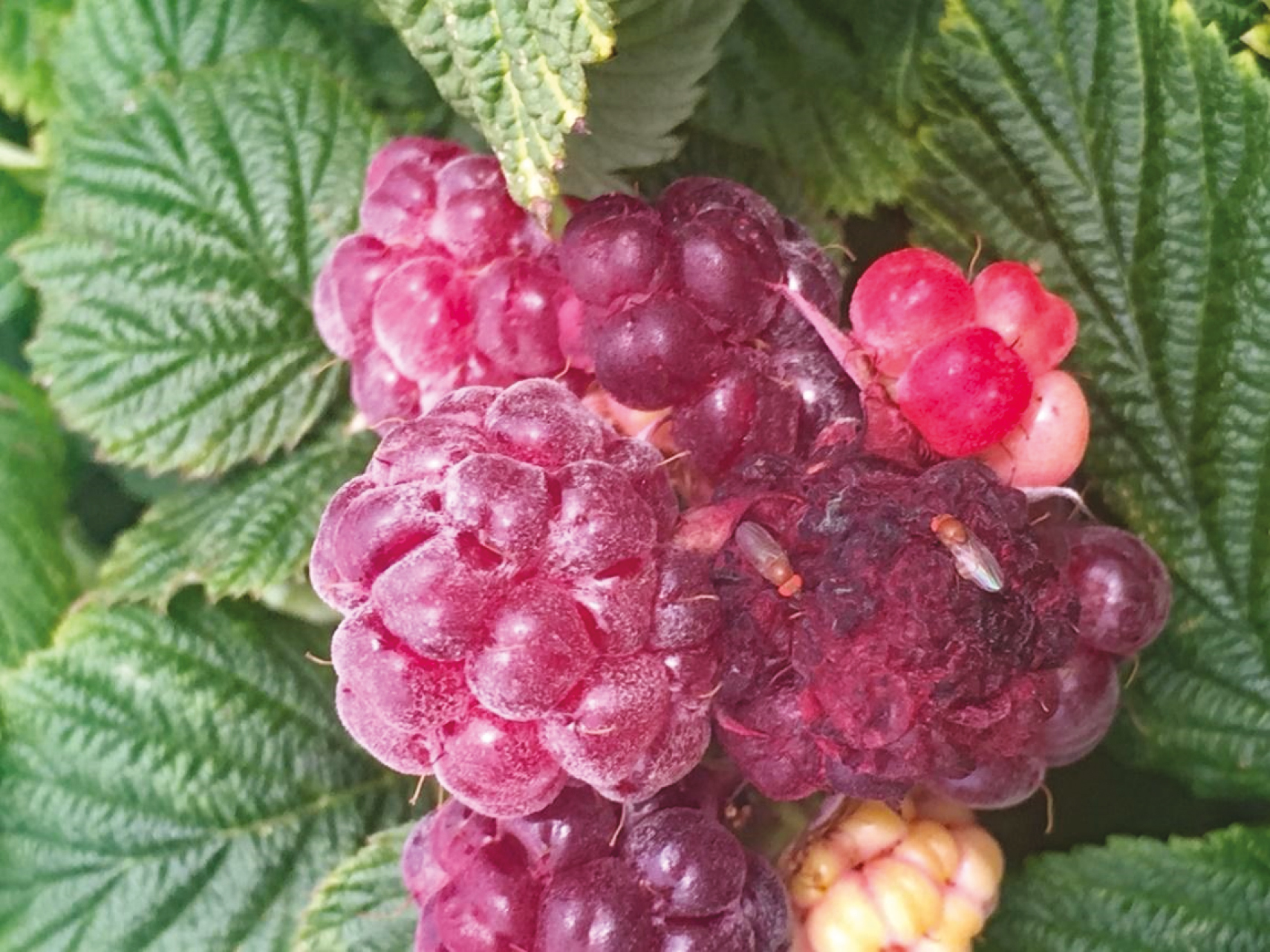
Spotted wing drosophila adults on raspberry fruit damaged by feeding; within hours, fruit degrades and becomes unmarketable. Credit: S. Wold-Burkness, University of Minnesota.
Local raspberry farmers lose an estimated $2.3 million in annual sales to spotted wing drosophila
ST. PAUL – Minnesota raspberry growers lost an estimated $2.3 million in sales to the invasive fruit fly known as spotted wing drosophila in the 2017 season. Researchers funded by the Minnesota Invasive Terrestrial Plants & Pests Center (MITPPC) used local grower surveys in combination with field research and USDA census data to evaluate the economic impact of the state raspberry industry’s most significant pest. Their findings were recently published in the Journal of Integrated Pest Management.
The team’s electronic survey of 45 raspberry growers included questions about farming practices, spotted wing drosophila infestation rates, yield losses and plans for the future.